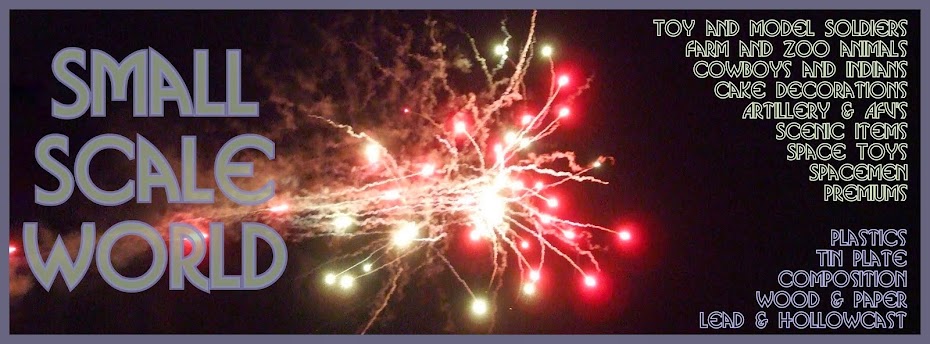Like the tubas, I haven't the faintest idea how to tell the difference between a Trumpet, Bugle Horn (except a straight horn, but then - some trumpets are straight? Doh!) or cornet, but as Paul Morehead (of Plastic Warrior fame) did once explain it all to me, while studying this very subject (guards musician figures), I'm going to quickly Google it so he thinks the lesson hit home...ssshhhh, don't tell him!
Bugles and Cornets have a tapered cross-section, Trumpets - commonest of the three - have a tubular cross-section only widening at the bell end. Trumpets and cornets have three valves, the bugle usually doesn't. Cornet valves are nearer to the face (so better for beginners?), however in American 'drum and bugle corps' bugles can have rotors (whatever they are) or 1 or two valves - which are really just modified Trumpets, Mellophones, Baritones or Tubas!
What?!! Mellophones?
Trumpets and cornets are very similar, sound wise, commonly found in the B-minor key...but can be found in any other! C, E-minor and F being among them. A single cornet in E-minor is found in a brass-band as the 'soprano', while C keyed trumpets are found in orchestras. The cornet is a mellower sound and the trumpet louder and brighter. Cornets are considered 'band' instruments, while trumpets are orchestral, but both can be used in either!
Flugelhorn - flatter cross-section to the tubing with a larger bell, gives an even more mellow sound.
Baritone trumpet - Larger mouthpiece makes it still easier to play.
Bugle horn - A straight-through or slightly curved 'bugle', no valves, hunting horn, Light Infantry / Jager cap badge type instrument (but not the US Rifles badge), the half-moon or Hanoverian bugle horn is a full half-circle.
French horn - A circular bugle...'post horns on coach-doors! And US Rifles cap badge
Mellophone - Commercial 'French horn' with lots of turns and three valves?
I think!! And medieval fairy-tale trumpeters are actually buglers?
Left to right; Cherilea 60mm, Timpo solid, Lone*Star reissue, Lone*Star original and two Sacul, one in a chalky white the other a garish apple-green marbled with cream.
Crescent for Kellogg's unpainted, Crescent painted and four different Charbens including one in hard plastic on the far right.
Close-up of the Timpo solid showing the typical shoulder marking of a lot of the Timpo solids, although others were marked on the base or even legs.
Italian Army soldiers - 🇮🇹🇮🇹🇮🇹
2 hours ago






No comments:
Post a Comment